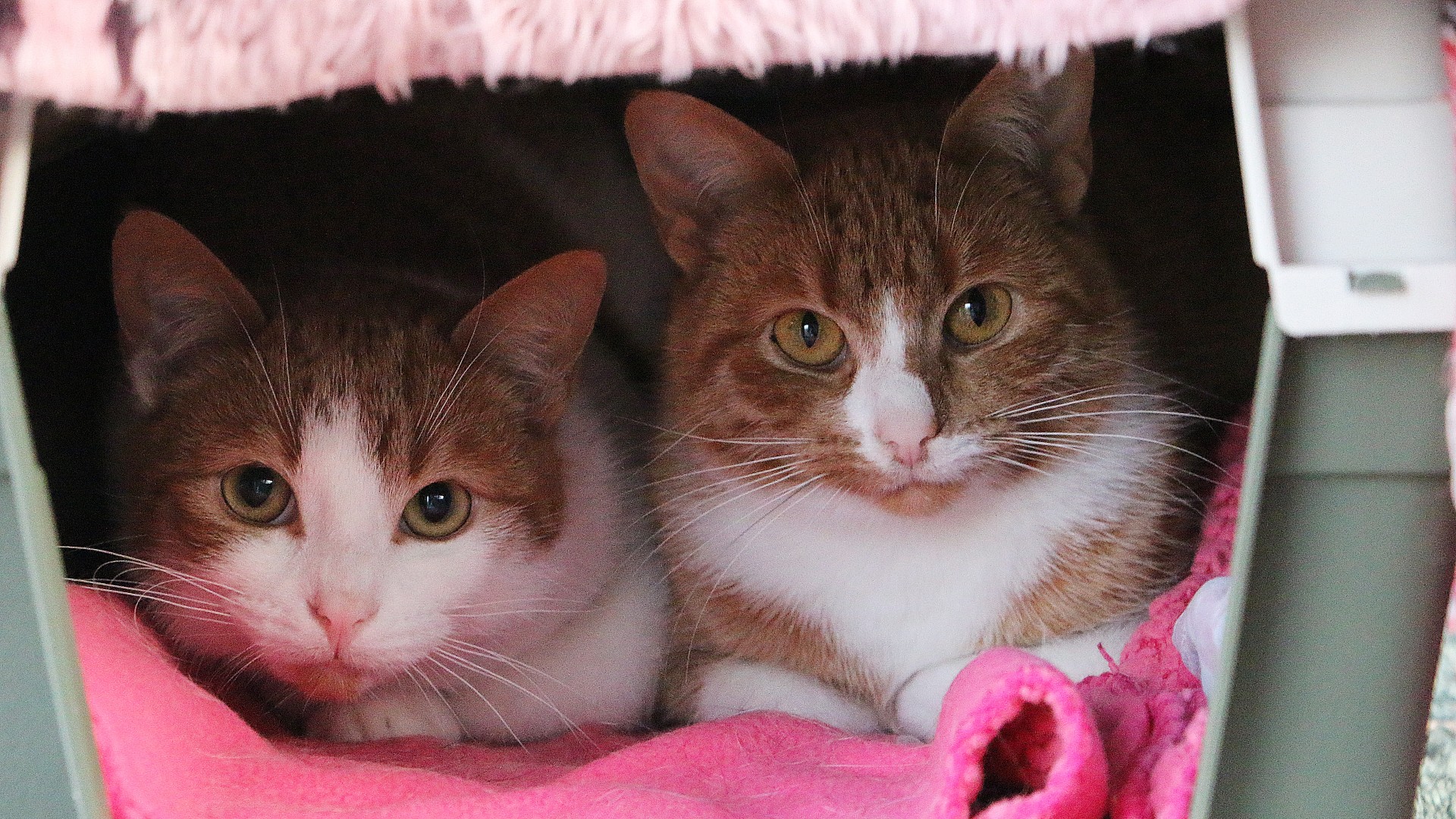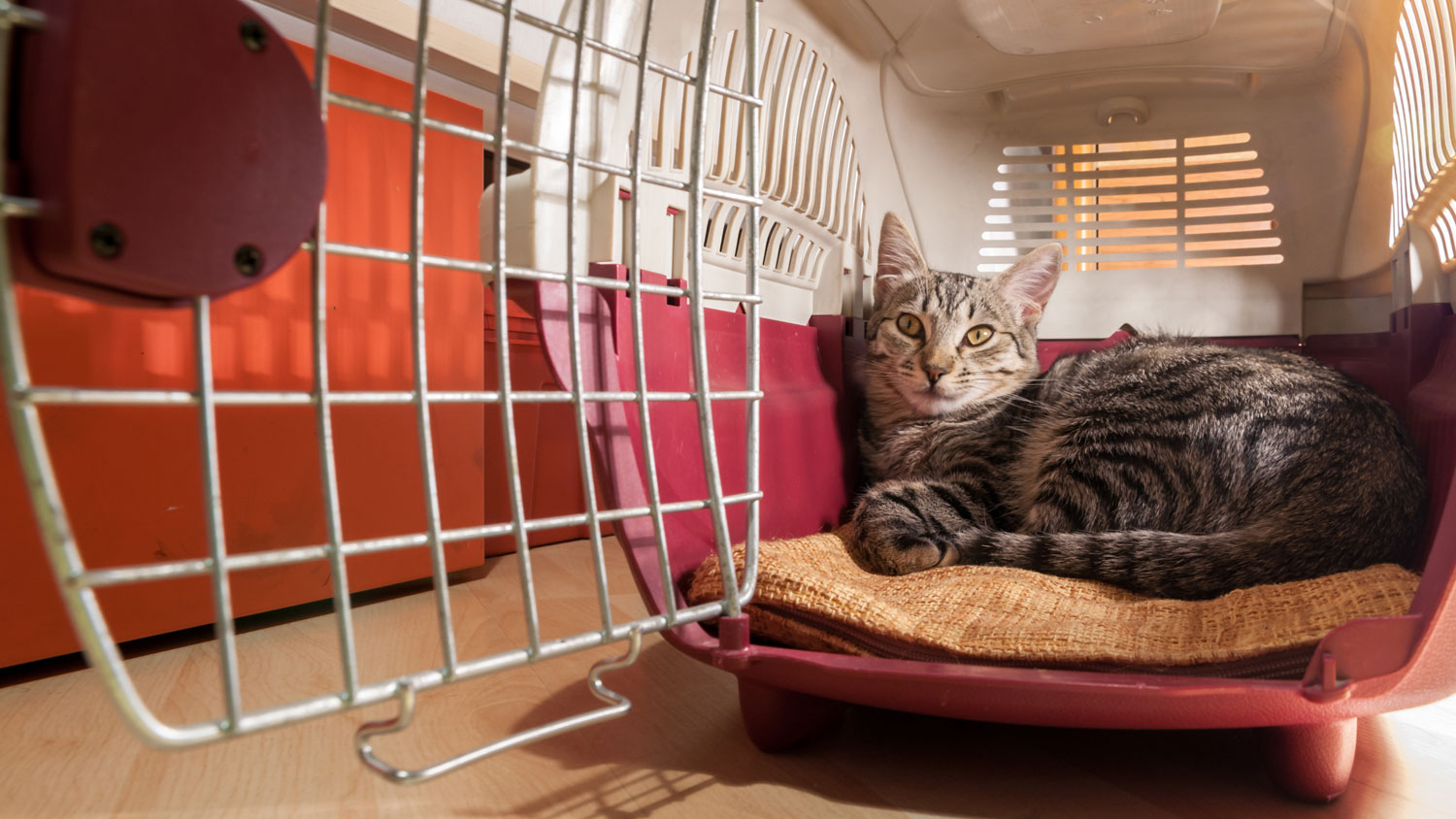Can you put two cats in one carrier?
We answer the question 'can you put two cats in one carrier?' and give you some helpful tips to ensure your feline fur babies stay happy and comfortable

Can you put two cats in one carrier? It’s a popular question amongst pet parents who have more than one feline friend in their family and while you can get away with doing this on some occasions, there are several things you need to be aware of.
Most of the best cat carriers are built with single-occupancy in mind, so they’re not always spacious enough to be suitable for two cats. That being said, there are some that are roomier than others and these can be ideal for short trips.
With regards to how big should a cat carrier be, if you’re wanting to transport both of your fur babies together, you’ll likely want to steer clear of a lot of the standard models and opt for a 2-in-1 double design that’s been especially made for two cats.
There’s somewhat of an ongoing debate around soft vs hard cat carriers with pet parents having their own preferences, but you’ll find that if you have two feline friends that the majority of double designs are soft sided as opposed to hard. While that limits you choice-wise, it also eliminates the dilemma of which to choose!
So yes, it’s absolutely possible to put two cats in one carrier, but you’ll want to consider how long you’re going to be traveling for, how you can make the trip as easy and comfortable for your pets as possible and when it’s best to separate your kitties and let them travel separately. Here’s everything you need to know…
- Best cat harnesses: The secure way to let your kitty explore
- Can you take a cat on a train, bus or tram?
- How to get a cat into a carrier: 7 steps to success
Can you put two cats in one carrier?
Don’t you just hate it when the answer to a question is ‘it depends’? But, unfortunately, when it comes to whether or not you can put two cats in one carrier, it really does depend on the situation.
By car
If you’re planning on hitting the road and heading off on vacation, then transporting your cats together is absolutely doable. Because it’s your car, it really is up to you and there are certainly no rules that prohibit two feline friends sharing a carrier.
Get the best advice, tips and top tech for your beloved Pets
However, even though you can certainly pop your cats into the one carrier for your road trip (provided it’s large enough), it’s important to note that while they may be the best of friends at home, traveling is stressful for cats and can cause them to behave in ways they wouldn’t normally when their paws are on solid ground.
You may find that a relatively short car ride together is something both of your feline friends can tolerate well and for some, longer journeys may also be possible. We recommend you do a couple of practice runs around the block before venturing further afield to see how your fur babies fare.
A trip to the vet
When it comes to taking your cats to the vet, we don’t advise that you put them into the one carrier. It’s often tricky to get one cat out of the carrier without the other one kicking up a fuss, so most vets prefer that each kitty arrives in their own carrier.

On a flight
If you’re wanting to take to the skies, you’ll find that most airlines have very strict policies about transporting cats. For starters, all of them must follow the regulations set out by the United States Department of Agriculture and the Animal Welfare Act which states that:
“No more than two live puppies or kittens, 8 weeks to 6 months of age, that are of comparable size and weighing 20 lb. (9 kg) or less each, may be transported in the same primary enclosure via air carrier.”
There are also further guidelines you need to be aware of, such as whether your feline friends can come on board with you or whether they need to travel as cargo and the size requirements for each carrier. Check out our top tips for flying with a cat for more information.
Tips for transporting two cats together
Traveling with a cat isn’t always the easiest experience and when there’s two of them in the same carrier, it has the potential to be even trickier. But, with a little bit of advanced preparation, there’s plenty you can do to ensure the trip goes smoothly:
1. Make sure the carrier has enough space
While making sure the carrier you’ve chosen has adequate space for your cat is always an important consideration, it’s particularly crucial if your feline friends are going to be snuggling up in there together.
Rather than trying to fit two cats into a carrier that’s been designed for one, we recommend you look for a model that has been specifically made to accommodate two cats.
You’ll find some great designs on the market, including ones that zip together to form one big carrier with the choice of a divider in the middle and that can also be unzipped for single use.
2. Give your cats time to get used to it
When it comes to how to get a cat into a carrier and ensuring that your journey goes as well as possible, giving your cats time to get used to their temporary home gives you the best chance of success.
Regardless of whether your cats are newbies or seasoned travelers, always bring the carrier out and place it into a visible spot around two weeks before they’re going to need to be put into it.
Leave the door open and allow your cats to explore the carrier in their own time and at their own pace. Both cats need to be super familiar with the inside of the carrier and feel comfortable being in there together.
Once they’ve been given plenty of time to suss out the carrier, practice putting the two of them in there together for a minute or two at a time. It’s worth having a bag of the best cat treats on hand to reward them for being well behaved as this will give them an extra incentive to sit together quietly.
3. Pop in some creature comforts
It’s worth trying to make the carrier as comfortable and cozy as it can possibly be, as this will really help your feline friends to feel safe and secure while they’re traveling together. A cozy blanket that they’re both familiar with and a few of the best cat toys will work wonders when it comes to achieving this.
4. Ensure your cats are compatible
It’s really important to make sure that your cats are compatible with each other before you let them travel together. Cats are highly territorial creatures who don’t always take kindly to sharing their personal space and the last thing you want is a fight breaking out while you’re trying to drive.
In general, if you have two cats who are both fairly friendly and gentle, you’ll likely find that they’ll happily snuggle up to each other and actually enjoy having their best furry friend there for comfort on the trip. But, if one or both cats are highly energetic or aggressive, separate carriers will avoid any tension on the trip.

5. Stick to short trips
While longer trips may be possible with regular breaks, even the roomiest of carriers can feel cramped when you have two feline furkids in there together. We recommend that you stick to short trips if you’re planning on housing your kitties together and for longer trips, invest in two carriers - this will also ensure your cats don’t become frustrated traveling for long periods in close proximity to each other.
When should you not put two cats together in one carrier?
You definitely want to avoid putting two cats together in a carrier who don’t get along. This will only cause fights to break out, which will be stressful for both cats and distracting for you - especially if you’re trying to drive.
It’s also important that you don’t put cats together that don’t know each other. So, if you’ve just added to your fur baby family and your cats haven’t yet got properly acquainted with one another, do not allow them to travel together.
Finally, only let two friendly cats who get along well share a carrier if the carrier is big enough to accommodate both of them comfortably. Choose one that has been specifically designed for two cats and ensure it has enough room that each cat still has a small amount of personal space available if they don’t want to snuggle up together.

Kathryn is a freelance writer who has been a member of the PetsRadar family since it launched in 2020. Highly experienced in her field, she's driven by a desire to provide pet parents with accurate, timely, and informative content that enables them to provide their fur friends with everything they need to thrive.
Kathryn works closely with vets and trainers to ensure all articles offer the most up-to-date information across a range of pet-related fields, from insights into health and behavior issues to tips on products and training.
When she’s not busy crafting the perfect sentence for her features, buying guides and news pieces, she can be found hanging out with her family (which includes one super sassy cat and a kitten), drinking copious amounts of Jasmine tea and reading all the books.
She has written for a range of publications, including Fit&Well, Top Ten Reviews, LiveScience, Goodto, and Product Hunt.
